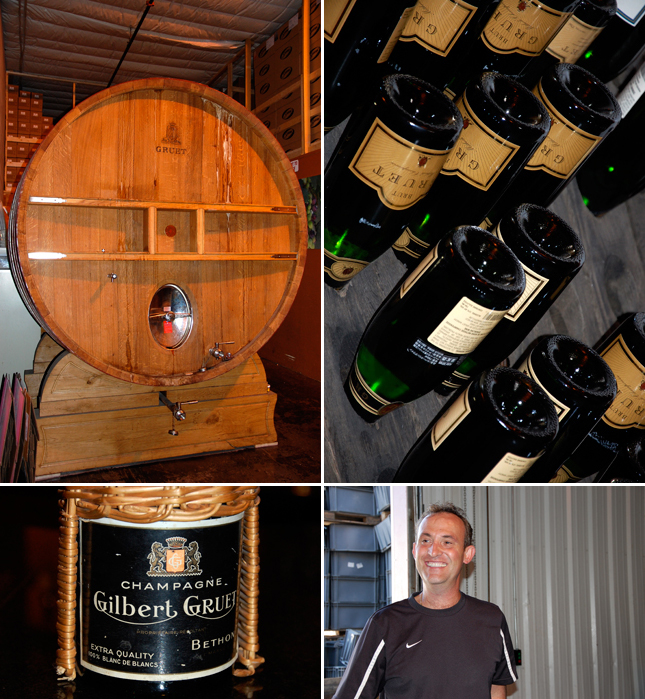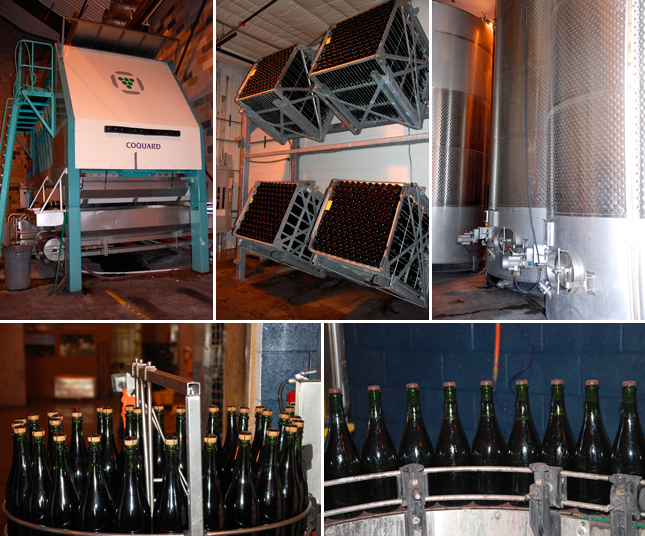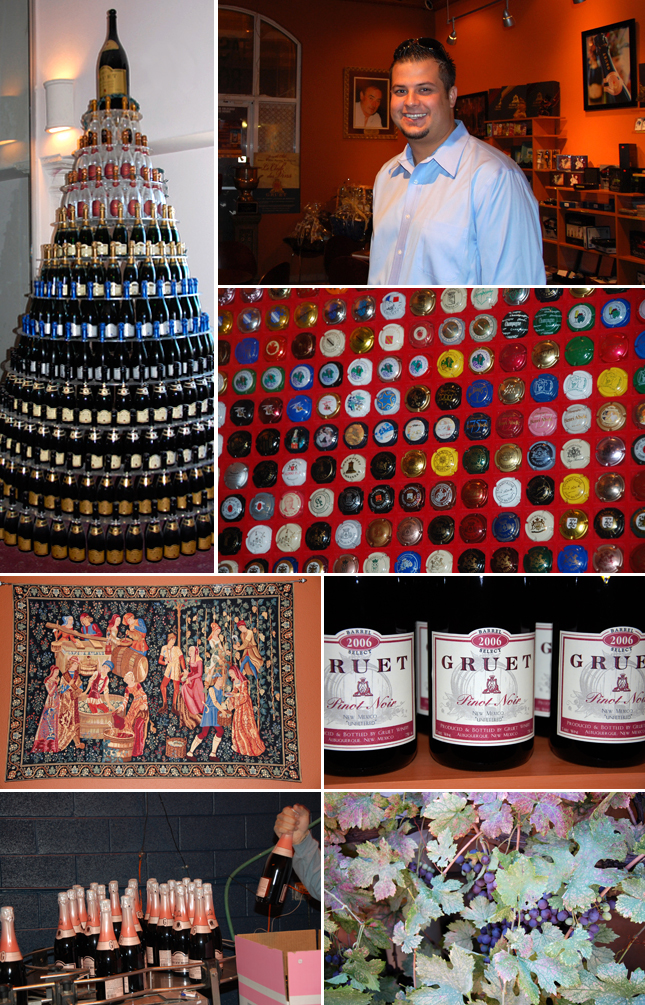
Tucked in a corner behind many larger and newer vessels are the original five, 500 gallon tanks the Gruet winery used to ferment the wine for their first bottling in 1987. Usually tanks, large or small, are hardly noteworthy. In this case, however, the wine made in those small vessels bought the twenty plus 12,000 gallon tanks that surround them, the state-of-the-art Coquard hydraulic press (one of three in the US) and all the other equipment necessary to produce sparkling wine. Their little-tanks-that-did represent a vision made reality. Or, one might say, the tanks played a role in a seemingly harebrained idea, that being: producing sparkling wine in the high desert of New Mexico.
Snobs and wine geeks have a nasty habit of pooh-poohing wines that come from regions they feel to be sub-par. These so-perceived lesser wine regions have had to contend with the perception that there are tried and true places to make certain wines and to make them anywhere else is pure folly. While there is validity to this way of thinking, for example no one is going to plant negroamaro in Nantucket or Lambrusco in Laramie, optimal growing locations for many varietals are still being discovered.
Earlier European arrivals to New Mexico with a penchant for wine had some success with certain types of grapes prior to the arrival of Gilbert Gruet in 1983 but the founder of the Champagne house Gruet et Fils recognized potential in the region and planted his first vineyards in the inexpensive acres of New Mexico. Gruet planted only Chardonnay and Pinot Noir -- two of the big three grape varietals in Champagne production. (The third being Pinot Meunier, a grape some believe to be one of Pinot Noir’s ancestors.) In so doing he began the winery that produces some of America’s best, reasonably priced sparkling wines.

The soils and climate of New Mexico versus the soils of Champagne couldn’t be more different yet the results are strikingly similar. The Gruet vineyards, near the town of Truth or Consequences are at 4,300 feet. Champagne sits at about 1,200 above sea level. Average rainfall in central New Mexico: 10-12 inches annually. This part of New Mexico experiences a “monsoon season” in late summer. Average summer time temp. 90℉.
Average rainfall in Reims, France, heart of the Champagne region: 7.5 inches annually. Average normal summer time temp. is 84℉. Cooler growing seasons mean longer ripening, less ripe grapes mean higher acid, higher acid makes for crisp, exhilarating Champagnes.

The differences run deeper. The Gruet vines grow mainly in Caliche, a limestone soil found about three to ten feet below the topsoil. Caliche is common to the world’s hot spots and is formed when moisture trickles or slowly seeps through the hot upper soils. As this moisture penetrates the ground it takes minerals with it. Intense, prolonged desert heat bakes these sunken mineral layers that over the course of geological time form a thick strata of calcium carbonate. The roots of the Chardonnay and Pinot Noir vines planted in this soil pry into this mineral-rich layer and sustain themselves.
About 70 million years ago the part of the world we now call Champagne was under the ocean. This was the late Cretaceous Period and the oceans and continents as we know them now were taking shape. As the waters receded they left behind a thick, chalky subsoil. Thus the name Cretaceous, which means “chalky.” Lots of seismic upheaval later the Champagne region took shape setting on a layer of belemnite chalk -- this vein of chalk is the same one that makes the white Cliffs of Dover. Inhabitants of the region began cultivating grapes, recorded their observations and progress and learned after centuries of trial and error that their Chardonnay, Pinot Noir and Pinot Meunier could be fermented twice, riddled, dosaged, bottled and corked making it the world’s most celebrated drink.
Are there other big differences between New Mexico sparkling wine and French Champagne? Yes, cost. Gruet wines, sparkling or still start at around thirteen bucks and go up to $50. A decent, entry level Champagne might run about $40 to $50. Is there a difference in quality? Some might debate this but, yes. French Champagne is superior. They’ve been at it a lot longer. Is there really a need to make such comparisons? No. In either instance it seems nothing short of miraculous that we have such a drink as Champagne/Sparkling wine at all.
Sofian Himeur, grandson of Gilbert Gruet, discusses the origin of Gruet.
Contact: Gruet Fine Wines
8400 Pan American Freeway N.E., Albuquerque, NM
(505) 821-0055 . Fax (505) 857-0066 . Toll-Free (888) 857-WINE (9463)
info@gruetwinery.com